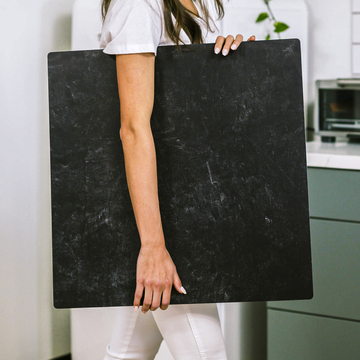As a product photographer with over a decade of experience, I've learned that creating stunning flat lay photos involves much more than just arranging objects beautifully. Today, I'm pulling back the curtain on something rarely discussed: the fascinating science behind flat lay backdrops that can make or break your shots.
The Secret Life of Surfaces
Think about running your hand across different surfaces - smooth marble, textured linen, or matte cardstock. Each feels different, right? This same variation plays a crucial role in how your photos turn out. What we're actually dealing with is surface topology, and it's a game-changer in flat lay photography.
Let me share a recent example: I was shooting a jewelry collection, and despite using the same camera settings, the pieces looked strikingly different on various backgrounds. The reason? Surface micro-texture - those tiny variations in smoothness that our eyes barely notice but our cameras definitely capture.
Understanding Light's Dance
Here's where it gets interesting (and I promise to keep the physics light!). When light hits your backdrop, it doesn't just bounce off like a tennis ball. Instead, it interacts with the surface in two ways:
- Specular reflection: Think mirror-like bounce, great for creating subtle highlights
- Diffuse reflection: More like light scattering, perfect for soft, even illumination
Pro Tip: For most product shots, you want a balance of both. I've found that slightly textured surfaces with a semi-matte finish often provide the sweet spot.
The Material Matters
Not all backdrops are created equal. Here's what I've learned about choosing the right material:
Temperature Stability
Have you ever noticed your backdrop slightly warping during a long shoot? That's thermal expansion at work. Materials like high-quality PVC or certain composites maintain their flatness better under hot studio lights.
Surface Consistency
Want to know a pro secret? Gently run your hand across your backdrop. If you feel inconsistencies, your camera will see them too - often more dramatically than your eyes.
Real-World Application
Let's put this knowledge to work. Here's my tried-and-tested setup:
- Lighting: Position your lights at 45° angles to minimize unwanted reflections
- Height: For standard product shots, I typically shoot from 24-36 inches above the surface
- Surface Choice: Match your backdrop texture to your subject. Smooth for glossy products, slightly textured for matte items
Practical Takeaways
- Test your backdrop with different lighting angles before adding products
- Consider the scale of your surface texture relative to your subject
- Keep your backdrop clean and store it properly (flat, not rolled) for consistent results
Remember, the best flat lay photos come from understanding not just what looks good, but why it looks good. By mastering these technical aspects, you're not just taking photos - you're creating controlled, repeatable excellence.
Have questions about your specific backdrop challenges? Drop them in the comments below, and let's dive deeper into the science of perfect product photography!


